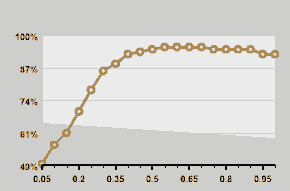Midpack
Give me a museum and I'll fill it. (Picasso) Give me a forum ...
Nothing wrong with the withdrawal methods you describe, but none of the above should be referred to as meeting 4% SWR methodology. There is a standard practice, there have been dozens of academic papers written (Bengen, Trinity Study, etc.) describing how it works Safe Withdrawal Rates - Bogleheads.Generally I just state my 4% SWR choice since I'm not sure that there is a standard practice on this. Or is there? To me 4% SWR could apply to several approaches and I'd specify 2 of them as:
1) 4% of the inflation adjusted portfolio
2) 4% of the start of the year portfolio
another example would be:
3) 4% of the average of the portfolio the past 3 years
and it goes on, and on, and on .... Pick your poison.
The 4% SWR methodology is as MichaelB described above. You never look at portfolio value after the first year (probably not wise, or practiced by many).
MichaelB said:4% SWR means taking 4% from the portfolio the first year, then taking that same amount plus inflation every year after that, regardless of what % of the portfolio it represents.
Last edited:

